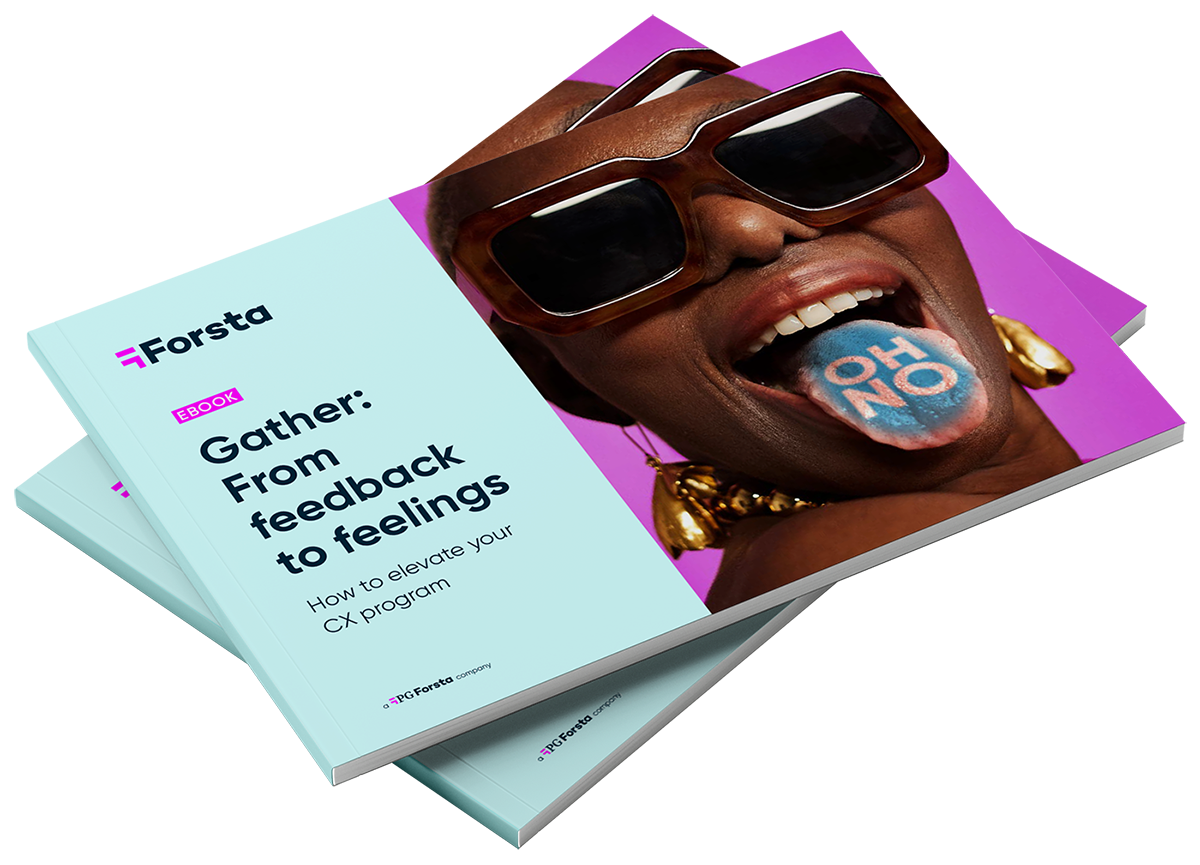Harnessing the power of social listening

Want to know how many people use social media worldwide? 4.59 billion*. Yes, 4.59 BILLION people. And since social platforms are all about engagement, you can’t even imagine the staggering number of daily interactions, including posts, discussions, comments, reviews and yes, the occasional rant.
Your existing customers – and many of your future ones – are clearly on social media, whether you choose to engage with them there or not. Some of them Follow your brand, the more engaged might have even gone as far as clicking on Like or Share. Remember, nearly 90% of consumers read reviews before they make a purchase, and 49% people trust online reviews as much as word of mouth. *
So, if you are listening to your customers on social media, what exactly are you listening to? A lot of it is chatter of course, but does that mean you should ignore it? Definitely not – many brands have done so at their peril and are still paying the price. But surely it should be treated differently from surveys and other types of customer feedback, right?
In this blog we dive into social listening to discover how to transform social media chatter into meaningful insights.
What is social listening?
Social media listening in the context of customer feedback, describes all the tools and solutions that let brands listen to what’s being said on social media platforms, convert this content into insights and trends, and make decisions that impact the business.
Your customers post all the time on Twitter, Facebook, Instagram, LinkedIn, Yelp, Google Reviews and many other social media, blogs, and review sites. Some of this feedback is public but some of it isn’t even visible to you, depending on the platform and privacy settings.
Customers won’t always make it easy for you and post comments on your company page. Key hashtags will help you spot comments that are relevant to your brand. You’ll need listening posts everywhere if you want a decent shot at catching key conversations. Those that need a response or an action. Those that can make or break your brand.
But it’s not all about you! Social listening can also help you understand your competitors better. By widening your scope, you can find out a great deal about you vs. them, about strengths and weaknesses on both sides.
The advantages of social listening
Widely available
The reason social media is popular is that it’s also widely accessible. Globally. Via desktop or mobile. Across language barriers. That’s great news for people, and it helps you as a brand too. Social feedback trickles in constantly, day in day out. A bottomless well of customer insights at your fingertips.
Real-time
Feedback through social media platforms has no delay. It comes as and when customers have something to say. Which is sometimes unfortunate, but always timely. No recall bias there. And what you get is often raw emotions, positive or not, that let your brand know exactly where it stands.
Low cost
Most social media networks are free, at least for customers, to use. Often for brands too. So, make the most of it, and prompt your customers to share their thoughts and feelings on this channel. Of course, you’ll need paid tools to capture all this feedback at scale, really understand its meaning, and do something about it.
Early detection of issues
Social feedback is always on. Unprompted. Unstructured. That means if there’s a new problem with your product or service, like billing errors caused by a new accounting system, or a deficient batch of products, you’ll see a sudden spike of customers talking about it. And if you’re listening, you’ll be able to catch this quickly before it becomes a more serious problem, or worse, a reason for churn!
Source of innovation
You might think you know your products best… and in some ways you do. Sometimes so well it stops you from seeing new angles, a fresh perspective. Customers often hold the key to true innovation. They might suggest a modification or a new use you wouldn’t even have considered. So, make sure you listen carefully for those sparks of creativity they might share with you. [DB7] [AB8]
What are the limitations of social listening?
Multiple sources
When we talk about social media, we forget the sheer volume of platforms out there. Not just the key ones – Twitter, Facebook, Instagram, and LinkedIn for instance – but all the blogs, ratings and review sites that are relevant for you, your customers, and your industry. Most brands need to monitor the main groups their key customers belong to, not just their company pages. Discussions tend to pop up just about anywhere, often at the most inopportune time. So, keep your eyes open everywhere.
Visibility
Sometimes this one’s an advantage, especially if you have an army of promoters. But when negative feedback comes in through social, it’s very tricky to keep it quiet. It often spurs on more negativity from other customers, and if you’re not “on it”, you might have a wildfire on your hands. Always respond quickly to negative feedback, a heartfelt and genuine apology often does the trick, and try and continue the conversation through private channels (like a direct message) to avoid any escalation.
Dedicated resources
Although everyone’s on social, it doesn’t mean everyone can manage it well. It takes a certain expertise, the right tone of voice, and specific communication skills to get it right. And these resources can be difficult to find, to train and to retain. You need people who can use monitoring tools, and respond quickly and efficiently, as well as analyzing all the feedback and making sense of it.
Extreme views
Social media platforms are well known for their tendency to polarize communities, even customer communities. Bear this in mind when you put feedback from this source alongside more structured feedback (e.g., from surveys). Views on social are generally more extreme and you’ll need to factor that in when you look at feedback across channels and touchpoints.
Examples of social listening
Social monitoring
Let’s start with the basics. Look out for mentions of your brand on all platforms. Sounds tedious? It would be but there are great tools out there that help with social listening. And not just to count mentions, but also to understand the sentiment behind them. You get more honesty on social as customers feel they can be more direct when they’re not talking to you directly. More importantly you get instant feedback about new issues, and if you’re listening closely, you can offer quick-as-a-flash responses to individual customers (e.g., apologizing and offering a refund), but also long-term fixes for the business in general.
Post a survey on social media
It’s a great way to boost your survey responses and engage a wider audience. Post your survey as a tweet, or a post in Facebook, LinkedIn, or other platform, and it will be accessible not only to the customers in your email database, but also to those who unsubscribed, potential customers, and the public. You might want to consider a different link or use a specific variable for your “social” outreach, as the results might be a little more random than your proper email survey. That way, you’ll be able to compare results side by side.
Across all channels
There are many ways to listen to customers on social media across popular social media platforms and related rating and review sites. Listen to all the voices not just the ones you’ve asked for. Social listening data may already sit within your organization through owned social media channels or related data sources. Alternatively, you can connect to popular social media analysis tools such as Brandwatch to cast the widest net of feedback.
Top tips
- Define your objectives clearly. You’ll need to understand how you plan to enhance your CX program with social media data.
- Conduct an audit. Check the volume and sources of social media chatter about your brand.
- Prioritize your next steps – what are you listening for?What feedback is a priority for your business? Ensure social data can be integrated with your CX program, so you can match up social data to your customer journey.
- Run a pilot using data from 1-3 sources. An MVP (minimum viable product) of data to analyze will help speed up the process and generate rapid results to learn and iterate accordingly.
- Analyze the results from both solicited and unsolicited feedback. Bring data together in a compelling narrative that illustrates what customers are saying about your brand on social media.
- Repeat – add more data by expanding your pilot. Review it regularly to ensure your analysis can be future proof.
How can Forsta help?
Want to know what’s being said about your brand on social? Look no further. Forsta’s here to help. Our social listening solutions automatically pulls up reviews and opinions from platforms like (deep breath): Twitter, Facebook, Instagram, LinkedIn, Google Reviews, Yelp, Trust Radius, TripAdvisor, Glassdoor, Open Table, Indeed, news sites, blogs, forums and all kinds of online communities.
Forsta helps you monitor all the talk about your business – not just review scores, but written opinions too. Compare this data with the reviews that come direct to you, and you’ll see the full spectrum of what people think. You can even see your competitors’ reviews through the same lens.
Our platform is packed with AI, machine learning and deep learning to instantly put every comment in its proper context. You can spot trends, crosstab, filter and sort for big picture insights or individual reviews.
Conclusion
So, we’ve seen how widespread social media is today, and how crucial it’s become for your brand. It’s where your customers are. It’s where your competitors are. It’s where feedback is. You just need to know how to access it.
And don’t be fooled: just because it’s easier to engage with customers on social media doesn’t mean it’s simpler. Specialized skills, dedicated resources, fit-for-purpose tools, you’ll need all that and more to get social listening right. As 68% of buying choices are affected by online reviews, you do indeed need to get it right.
The good news is the rewards are endless. Especially if you manage to turn the chaotic noise of social into melodic harmonies and bring them all together into your CX symphony.
“Transparency may be the most disruptive and far-reaching innovation to come out of social media.”
Paul Gillin
For more information, check out our eBook – Social engagement: Designing for participant interaction.
*Oberlo 2022, 10 Online Review Statistics You Need to Know, 4 December

Want to know how you can really understand customer behavior?
It’s the key to making the right decisions, at the right times. Especially when those times are turbulent. Check out our eBook Gather: From Feedback to Feelings.
Related stories
Everything you need to know about buying market research software
Everything you need to know about buying market research software Webinar synopsis: Tune in for a deep dive into the smartest way to evaluate, select, and secure the right research technology for your organization. We will expose the most common pitfalls, break down the key buying criteria, and show you how to build a rock-solid […]

Scaling customer experience in the age of AI: How intelligent automation is transforming CX
Scaling customer experience in the age of AI: How intelligent automation is transforming CX Scaling customer experience in the age of AI Simple, scalable, human: The new CX standard AI is transforming customer experience—and it’s doing more than just automating tasks. Today’s CX leaders are under pressure to do the impossible: deliver deeply personalized experiences, […]

Unlocking AI-powered customer insights with Forsta: Transform feedback into actionable intelligence
Unlocking AI-powered customer insights with Forsta: Transform feedback into actionable intelligence Webinar synopsis: Tune in for an exclusive deep dive into Forsta AI, where we’ll showcase how our powerful AI-driven tools—Summarize, Compose, and Recommend—are helping organizations turn raw data into actionable insights. Related resources

Learn more about our industry leading platform
FORSTA NEWSLETTER
Get industry insights that matter,
delivered direct to your inbox
We collect this information to send you free content, offers, and product updates. Visit our recently updated privacy policy for details on how we protect and manage your submitted data.